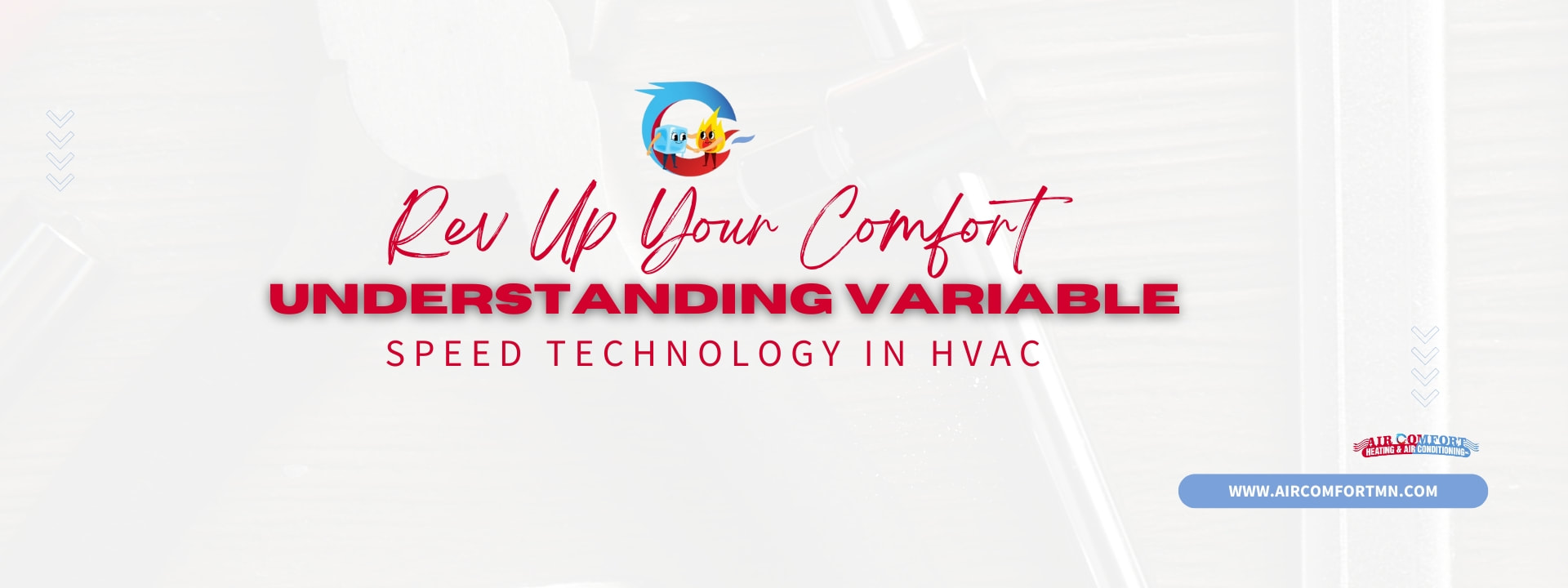|
In the quest for more efficient and comfortable home heating and cooling solutions, variable speed technology stands out as a game-changer. Unlike traditional HVAC systems that operate at a constant speed, variable speed technology allows the system to adjust its output precisely to the needs of the home. This not only boosts efficiency but also enhances overall comfort. Let’s delve into what variable speed technology is and why it might be the perfect fit for your home.
What is Variable Speed Technology? Variable speed technology refers to the ability of an HVAC system to automatically adjust the speed of its compressor and fans. Traditional systems turn on at full capacity and turn off once the thermostat setting is reached, which can lead to noticeable temperature fluctuations and higher energy use. In contrast, a variable speed unit operates at different speeds to provide more consistent heating or cooling, adapting its output to the exact needs of the space at any given time. Benefits of Variable Speed Technology Energy Efficiency: One of the most significant advantages of variable speed technology is its energy efficiency. By operating at precisely the right speed, these systems avoid the high energy use associated with the full-power start-up and shutdown cycles of traditional HVAC systems. This can lead to substantial savings on your energy bills. Consistent Comfort: Variable speed systems excel in maintaining consistent indoor temperatures. By making subtle adjustments to airflow and cooling/heating output, these systems can eliminate the hot and cold spots often experienced with conventional systems. Quiet Operation: Because they can run at lower speeds for longer periods, variable speed units are generally quieter than traditional HVAC systems. This results in a more peaceful indoor environment without the frequent noise of compressors kicking on and off. Improved Air Quality: The longer run times at lower speeds also mean more air cycles through the system's filters, improving indoor air quality. This is particularly beneficial for individuals with allergies or respiratory issues, as it can help remove more contaminants from the air. Comparing Variable Speed to Traditional Systems While traditional HVAC systems have a single-speed or limited-speed setting, variable speed systems can operate at an extensive range of outputs. This adaptability not only makes them more energy-efficient but also better at providing uniform and comfortable indoor climates without the typical temperature swings of conventional systems. Is Variable Speed Right for You? Deciding whether a variable speed system is right for your home depends on several factors, including your current HVAC system's performance, your home's size, and your climate. If you experience uneven temperatures in your home, high energy bills, or just want a more advanced system, a variable speed model could be a suitable investment. Installation and Maintenance Proper installation by a professional is crucial to maximizing the benefits of a variable speed system. It’s important to work with a knowledgeable HVAC technician who can evaluate your home’s needs and ensure your system is correctly installed. Regular maintenance is also essential to keep the system running efficiently and extend its lifespan. Variable speed technology offers a sophisticated approach to home heating and cooling, promising not just energy savings but also improved comfort and quieter operation. As technology advances, these systems are becoming a wise choice for homeowners looking to upgrade their HVAC systems. Are you interested in learning more about variable speed technology and how it can transform your home comfort? Contact Air Comfort today.
0 Comments
Leave a Reply. |
AuthorVarious. Archives
July 2024
Categories
All
|
CALL NOW: 763-753-6623
Privacy Policy l Cookie Policy l Conditions of Use l Notice and Take Down Policy l Website Accessibility Policy
© 2024 The content on this website is owned by us and our licensors. Do not copy any content (including images) without our consent.
Website managed by Go Savvy Social
Privacy Policy l Cookie Policy l Conditions of Use l Notice and Take Down Policy l Website Accessibility Policy
© 2024 The content on this website is owned by us and our licensors. Do not copy any content (including images) without our consent.
Website managed by Go Savvy Social


 RSS Feed
RSS Feed